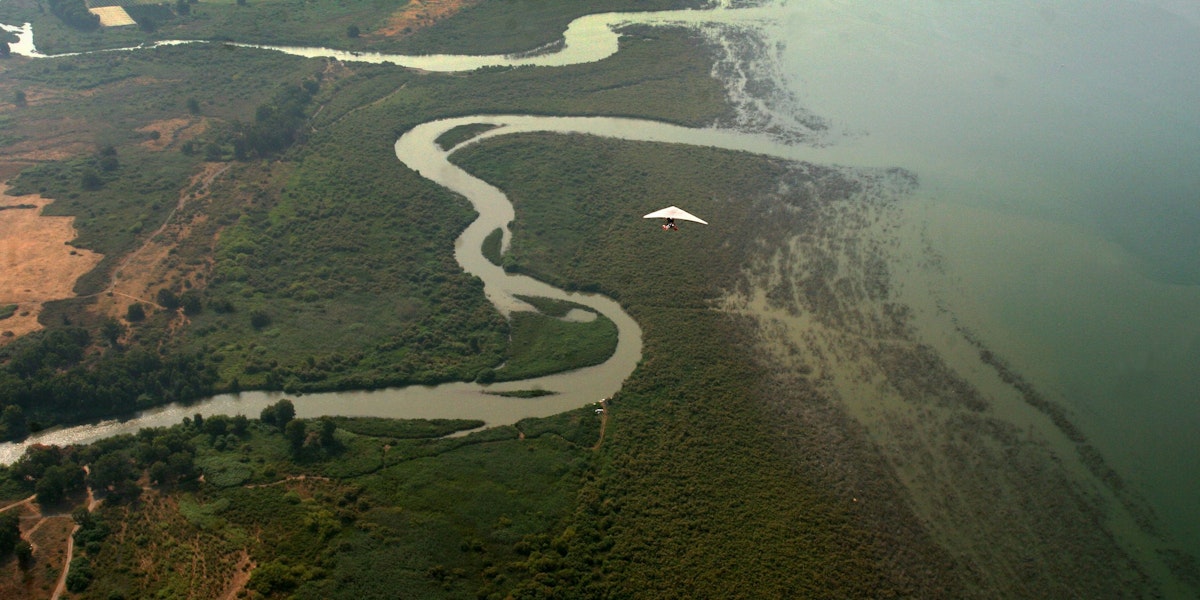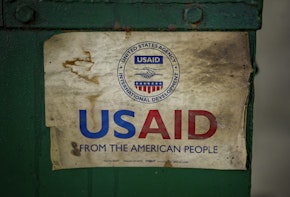Perhaps nowhere in the Middle East provides a better example of nature’s indifference to political boundaries than the Jordan River Basin. While the Jordan’s full catchment area includes parts of Lebanon and Syria, the main part of the Jordan River Basin stretches from the Sea of Galilee (also known as Lake Tiberias) to the Dead Sea, and is shared by three parties: the Kingdom of Jordan, Palestine, and Israel. The Jordan River Basin suffers from acute water scarcity. Its ecosystems suffer dramatically from diversion of water for use by the riparian states (those whose territory the river crosses).
Today, this watershed provides at least one point of potential agreement, albeit narrow, for all the territories it touches: the Jordan River Basin is in trouble, and the region needs new plans to address water scarcity. Regional population growth and climate change, compounded by challenging politics (including around water issues), have squeezed not only the Jordan River, but also other water sources in the area. Today, the Jordan River’s flow is less than 10 percent of its historical average.1 This reduced flow represents an unprecedented water crisis for the basin communities that the river has historically supported. The low flow also poses a danger to the very existence of the Dead Sea. If the Jordan River and its tributaries continue to be mismanaged, all the countries that depend on it will suffer. And if riparian ecosystems continue to decline, the long-term outcome could be devastating and unpredictable, destabilizing local communities and worsening existing conflicts between them.
But the silver lining of the Jordan River’s crisis is that a shared problem requires shared solutions. There is still an opportunity for regional parties to collaborate on water management as they each make their own internal reforms.
There are already examples of such collaboration taking place. Some regional initiatives, like the Red Sea–Dead Sea Conveyance, are ambitious but far from completion. Other measures are closer to being in reach. Across the board, the United States can help, both in mobilizing financial resources to encourage joint efforts and in facilitating the “hydro-politics” required to make headway.
To understand the opportunities for countries to work together in managing the Jordan River Basin and answering their water needs, it is important to take stock of the natural and political dynamics at play—and what kind of work is already underway. Each of the countries in the basin is already making efforts, both unilaterally and cooperatively, to combat the crisis. In some cases, countries are already reforming their water management sectors and making new investments.
But more efforts are needed to avoid a catastrophic situation and to allow the sustainable development of all people in the region in an equitable manner.
An Environment under Strain
The Jordan River Basin faces a dramatic environmental threat. The river, which has nourished the civilizations of the Levant for thousands of years, is under unprecedented strain.
Both the quality and the quantity of the water have decreased markedly. Most notable is the fact that in the Lower Jordan River, which stretches from the Sea of Galilee to the Dead Sea, the flow has declined from 1.3 billion cubic meters a year (bcm/y) to just 70–100 million cubic meters a year (mcm/y).2 This reduction is due to a dramatic increase in demand, driven by the fact that the populations of riparian states have multiplied over the past seventy years: Jordan, for example, grew from around a million residents to more than 10 million, while Israelis and Palestinians alike saw their populations skyrocket.3
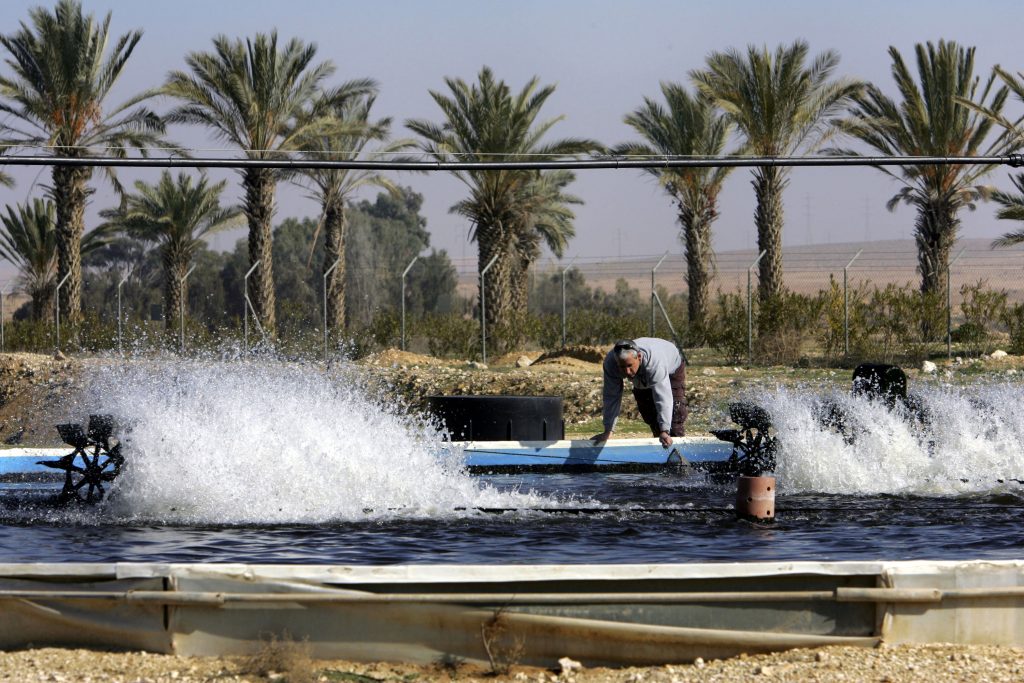
Regional aquifers are also severely depleted. Climate change has put further pressures on the river, while droughts get longer and deeper.4 Hotter summers have also increased evaporation in the basin, as they have in many parts of the world. Climate change further enlarges the gap between supply and demand, and increases threats for food security. Financial crises have also hindered the development of efforts to revive the Dead Sea, reuse treated wastewaters, and invest in renewable energy.
To make things harder still, the majority of the Jordan River Basin countries’ natural water resources are transboundary—in other words, the water is shared between them. As a result, managing water needs depends, to a great extent, on the political relations between the different countries. Those relations, of course, are complex and can be volatile. Among the ongoing issues are the absence of a permanent agreement between Israel and Palestine, instability in Syria, and a massive refugee influx into Jordan. The issue of water shortages—both in the Jordan River Basin and beyond—can contribute to instability. Some analysts have posited that severe drought in Syria contributed to that country’s civil war.5
The issue of water shortages—both in the Jordan River Basin and beyond—can contribute to instability. Some analysts have posited that severe drought in Syria contributed to that country’s civil war.
But it is not just population growth and politics—and the hydrological–political feedback loop—that has made the Jordan River’s situation so precarious. There is also the challenge of water resource mismanagement. Mismanagement of Jordan River Basin water resources is a problem for each party, and deep reforms are needed on both demand and supply.
The depth and characteristics of the water scarcity along the entirety of the Jordan River vary from country to country.
Lebanon, at the headwaters of the Jordan, has in total enough water for its population, mainly from sources in the country’s well-watered mountains. However, its infrastructure is too poor to get water to where it is needed and there is, inevitably, a great deal of waste.
Syria suffers from severe water shortages in its vast arid and semiarid hinterlands. Northeastern Syria is hurt by a reduction in the flow of the Euphrates River as a result of dam-building upstream in Turkey, while the entire country’s water supplies have suffered from mismanagement and civil war.
Jordan, for its part, is now the second-most water insecure country in the world, by some measures. Water needs are expected to exceed resources by more than 26 percent by 2025.6 Jordan found itself in 2013 in a full-blown water crisis—having integrated into its population nearly 1.4 million people seeking refuge from the Syrian civil war.7
In Palestine, average water consumption in the West Bank is below the World Health Organization’s declared minimum amount.8 And the Palestinian Water Authority does not have the administrative powers to fulfill its duties, including managing its own water resources, since the Israeli military and civil administration have practical control over resources in the West Bank. In Gaza, as Fuad Bateh and Rebhy El-Sheikh explain in another report in this series, the water situation is a catastrophe—in terms of both quantity and quality. The major natural water source—the Coastal Aquifer—is overpumped, contaminated, and saline. Although the aquifer is outside the Jordan River Basin, its state is a symptom of a broader complex of water mismanagement and overuse throughout the region. The dire situation of the Coastal Aquifer in Gaza is also contributing to tensions.9
Israel, too, suffers from the depletion of its natural resources. As such, Israel has opted to use unconventional water resources to answer its needs—both large-scale seawater desalination and wastewater reuse.
Political Complications
As noted above, responding to the looming environmental crisis and humanitarian water needs in the Jordan River Basin is not as simple as educating the various parties on better management. Politics and economics also get in the way—especially the former.
Geopolitical stalemates have translated into inaction on water management. On the Upper Jordan River (north of the Sea of Galilee), Lebanon and Syria—both of which have no official relations with Israel—take unilateral approaches to water resources. In this area, there is the least opportunity for imminent collaboration.
However, on the Lower Jordan, there has been good progress in cooperation between Jordan, Israel, and Palestine. Israel and Jordan signed a full peace agreement in 1994, which included provisions for water.10 Israel and Jordan are now cooperating in a very advanced manner—from sharing the existing natural resources to jointly developing additional sources. The two countries have an active Israeli–Jordanian Joint Water Committee, which communicates often. According to the Israel–Jordan treaty, just 35 mcm, plus whatever was stored during the winter season in the Sea of Galilee, is released each year to Jordan, while other waters are released from the Jordanian side into the Southern Araba Valley in Israel. The countries are cooperating in an effort to rehabilitate the Lower Jordan River by coordinating their respective master plans and by working together to clean the river from pollutants and to respond to floods.
There is no permanent agreement between Israel and the Palestinian Authority on the critical issues of water and other important matters. This absence of an agreement contributes to a deep imbalance in relations and has led to the complete dependency of Palestine on Israeli policies.
Still, there are serious problems. There is no permanent agreement between Israel and the Palestinian Authority on the critical issues of water and other important matters, such as borders and statehood powers. This absence of an agreement contributes to a deep imbalance in relations and has led to the complete dependency of Palestine on Israeli policies—not only for water, but also for other resources.
Governance of the West Bank water sector is dominated by the terms of Article 40 of the Oslo II Accord of 1995. Though the agreement deals with all water and sewage-related issues in the West Bank, it is outdated, and was only meant to be valid for five years.11 Nevertheless, two decades after it was intended to be replaced by a more permanent agreement, it continues to govern the water sector today. Another issue is that the 1995 Oslo II Accord fragmented jurisdiction of the West Bank into three distinct areas and in fact gave the Palestinian Authority only about 40 percent of the West Bank, with Israel retaining de facto control over the rest of the area. The Oslo Accords also created an Israeli–Palestinian Joint Water Committee that manages water and sewage in the West Bank (but whose authority does not extend to the Jordan River).12 The structure of the JWC means that Palestinians cannot, in practice, extract groundwater without Israeli approval.13 The Palestinian Water Authority thus cannot properly manage water sources and infrastructure. This is just one way that the prolonged “temporary” arrangement and practical conditions of occupation are hurting water management in the West Bank.
Another, related problem is that the West Bank suffers from negligence by Israel and the Palestinian Authority in treating wastewater. Streams in the West Bank are often contaminated.
The risks from failing to manage the Jordan River Basin water supply effectively extend beyond politics and into security. As one might expect of a waterway of this significance in a region this tense and water-impoverished, the Jordan River has been the frequent source of past tension. Many Palestinians see insufficient water access as one of the most tangible inequities of the occupation. Concerns over water have partially underpinned some of the most significant Arab–Israeli conflicts. Israel saw Syrian attempts to divert the river as a casus belli in the run-up to the 1967 war; Israel’s dispute with Syria over the Golan Heights has partly been fueled by its relationship with the Sea of Galilee.
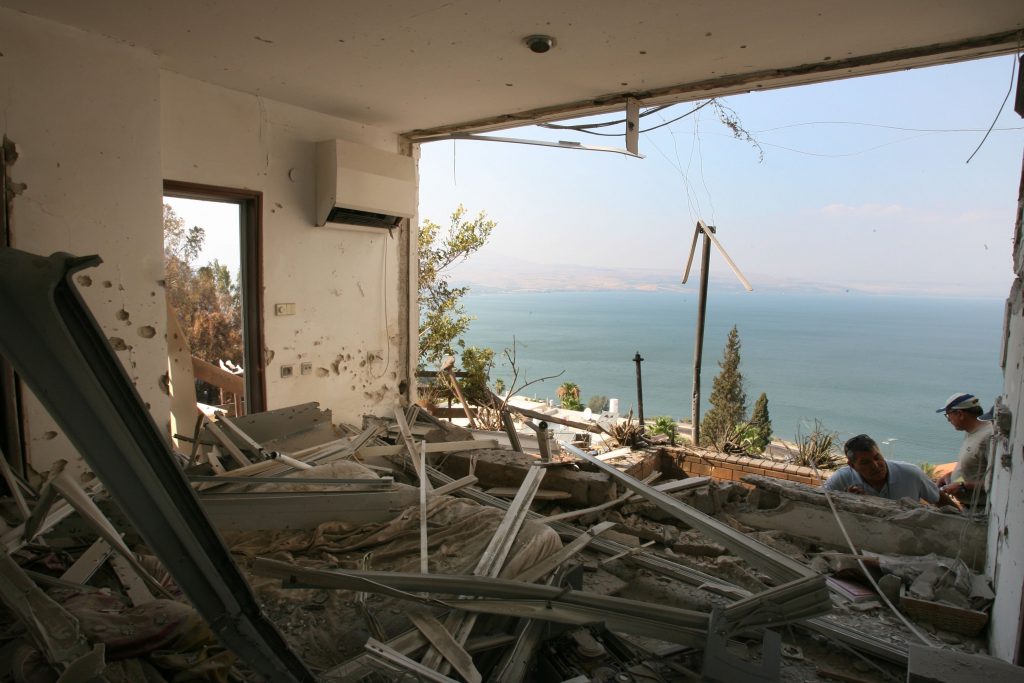
The fight over the Jordan River Basin has been less contentious in recent decades due to heightened Israeli–Jordanian water cooperation and Israel’s development of extensive desalination capabilities. However, climate change, growing population, lack of investment and management, and an influx of refugees (from Syria’s civil war and elsewhere) have thrown per capita water shares off kilter. Left unaddressed, these problems could cause future tensions: nationalistic flare-ups and even violence between different communities unable to peacefully share water.
Combating Water Scarcity
Today, Israel, Jordan, and the Palestinians are each pursuing their own water policies to cope with water scarcity while looking for ways to cooperate within geopolitical and fiscal constraints.
Jordan’s water strategy was conceived in 2008, and aims to meet its water needs by 2022.14 (An influx of Syrian refugees, among other factors, has ensured that Jordan would have to continue to increase its supplies to meet a continuing shortfall). The strategy aims to increase water supplies through pumping and desalination. It focused on the Disi Water Conveyance Project, which was mostly completed in 2013, and pumps 100 mcm/y from the Disi Aquifer, near the border with Saudi Arabia.15 Jordan’s strategy includes a focus on reclaiming wastewater, which one assessment found could fully meet industrial demand for fresh water in Amman, Zarqa, and Aqaba governorates.16 It also featured a program to build desalination plants (the first of which opened in 2017 in Aqaba and is now providing 5 mcm/y of potable water). Despite these efforts, only 15 percent of Jordan’s population are living above the World Bank threshold for “water scarcity.”17
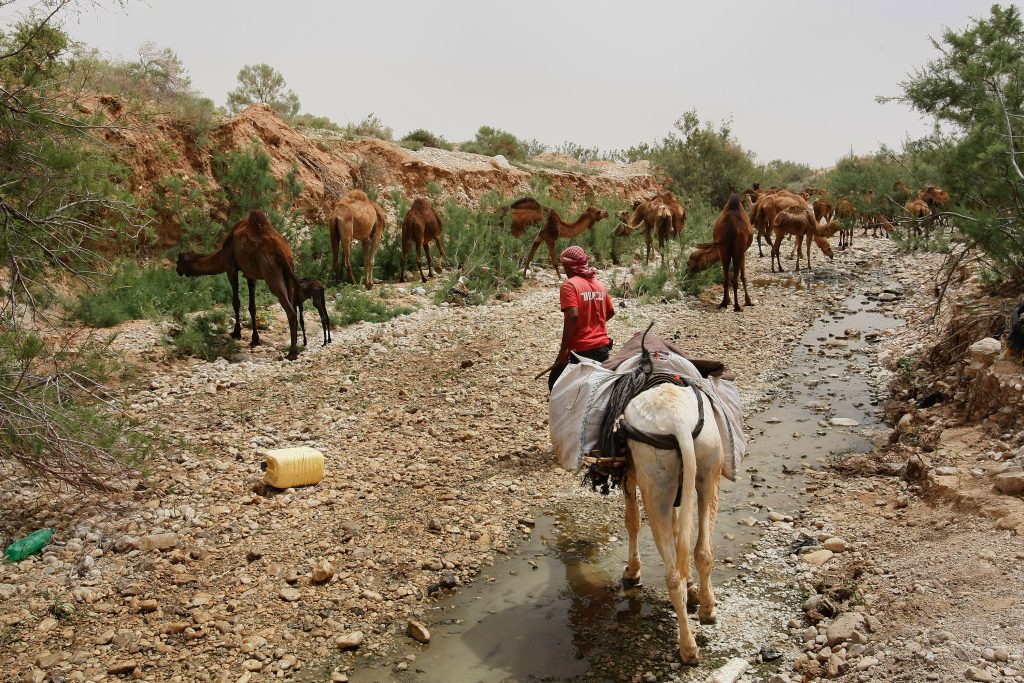
In Palestine, attempts to solve water scarcity are also falling short. The Oslo Accords, as discussed above, established certain temporary targets, and established that Israel is required to make available 28.6 mcm/y. This sum arises from a joint estimate of the Palestinians’ future needs as between 70 and 80 mcm/y.18 However, since this interim period began a quarter century ago, in the West Bank both the Palestinian population and the settler population have also grown significantly.19 The result is that the Palestinian Authority must purchase a quantity of water from Israel’s national water company that is two and a half times its allocation under the Oslo Accords.
Israel, which is in many ways the best-resourced of the countries on the Lower Jordan, has also struggled with long-term resources, but has had some success—if not in replenishing the Jordan River, then in ensuring its own water security.
Israel, which is in many ways the best-resourced of the countries on the Lower Jordan, has also struggled with long-term resources, but has had some success—if not in replenishing the Jordan River, then in ensuring its own water security. Its natural resources—the Sea of Galilee and the Mountain and Coastal Aquifers—are declining. The country’s water strategy, developed and implemented over recent decades, is based on three legs. First is the development of seawater desalination as a strategic source. It is producing 580 mcm/y, which covers to date some 65 percent of its domestic needs. The manufactured water is more expensive than fresh water at the source. But even when other steps are taken, the gap between supply and demand persists. Still, the combination of shorter supply lines (the plants are built close to population centers) and the increased and secure water supply significantly bridge the gap. Secondly, Israel has reduced the use of potable water for agriculture to less than 50 percent by developing the use of treated wastewater (86 percent of total wastewater) for irrigation. The third aspect of the strategy is a deep reform of the water management sector aiming at economic efficiency by, for example, establishing the water sector as a “closed financial unit” in which the total income should cover the full expenditure.
The Steps Ahead—A New Response
The region’s future prosperity and political stability will be affected by the availability of sufficient, good-quality water for all users. There is no “miraculous” solution or any “one solution” for the water scarcity crises. However, in aiming at overcoming the scarcity of water, the following principles should lead.
- Solutions, like the water challenge itself, must mix nature and politics. Ideally, progress on each can reinforce the other: diplomatic cooperation would allow the alleviation of material scarcity, while water issues serve as a peace-building process between the parties and not a point of deepening frictions and conflicts. In this context, it is imperative to reach a permanent and just overall agreement between Israelis and Palestinians, which will address the basic issues of statehood. The permanent agreement will have to address ways of bridging the gap between Palestine’s demand for water and its supply. This could be achieved through various methods, including allowing Palestinians to enjoy natural water resources in transboundary aquifers and surface water in an equitable manner. The Jordan River Basin has the potential to play a vital role in Palestinian economic recovery and development. It is a major component of a future viable Palestinian state, which can help grow nearly every major economic sector, including farming, tourism, transportation, logistics, and industrial and agribusiness development.
- Solutions must combine all facets of water management (supply and demand). A deep reform in the water sector needs to take place, leading to an economically sustainable, efficient use of water on the demand side. However, such demand management is not sufficient to overcome the gap between demand and supply. Any solution must include introduction of new and additional large-scale water resources, with emphasis on sea-water desalination.
- Today, the solutions must be based on sound and sustainable economic principles and involve the private sector—for example, in the ways that Israel established its large-scale desalination industry. Israel has used a public–private partnership and a “build-operate-transfer” model in which the private sector invests and owns the plant for twenty to twenty-five years before transferring it to the government.20 The return on investment comes in part from the government’s commitment to purchase the manufactured water at an agreed price, creating a lower market price for the water.
- The parties need the active support of the international community to overcome political challenges and forge win-win solutions. The parties have already started working on such cooperative solutions, which deserve support.
Since 1993, there have been regional activities aimed at disseminating expertise and best practices, and encouraging cooperation within the water sector. For example, the Middle East Desalination Research Center in Oman, established with the support of the United States and international community in 1996, remains active, having survived political turbulence to forge ahead on fifty joint projects, from shared water databases to mobile water labs.21
Meanwhile, as outlined in the 1994 agreement between Israel and Jordan, the two countries are working together to rehabilitate the Lower Jordan River. At this stage, efforts aim to reduce contamination, such as that from municipal wastewater. Neighboring communities are participating across national lines, as are civil society organizations such as EcoPeace Middle East.22
The most important regional water initiative, however, is the Red Sea–Dead Sea Conveyance. In response to the alarming dwindling of Dead Sea water levels and the scarcity of water supplies, Israel, Jordan, and the Palestinian Authority have agreed to create a desalination plant at the Red Sea in Aqaba, which would convey salt water from the Red Sea to the Dead Sea, and provide 850 mcm/y of potable water to Israel, Jordan, and Palestine. The project would also send an invaluable message that cooperation on water supply can benefit all sides and help pave a path to a larger peace. While financing has stalled for the project, the promise of this proposal remains, as does the hope that it will come to fruition in the years ahead.
The Red–Dead Conveyance would send an invaluable message: cooperation on water supply can benefit all sides and help pave a path to a larger peace.
In 2013, within the framework of the Red–Dead project, and as part of broader access to water supplies, Israel, Jordan, and Palestine signed a regional water sharing agreement. The agreement contained several provisions: water would be shared by Jordan and Israel; an additional 50 mcm/y for the first phase of the project, as agreed to by the two parties, would be transferred from the Sea of Galilee in Israel to Jordan; and 20–30 mcm/y of desalinated water would be sold by Israel’s water utility to the Palestinian Authority for use in the West Bank.23 Small additional agreements have continued. In 2015, Israel and Jordan agreed to “share the potable water produced by a future desalination plant in Aqaba,” while Israel agreed to double its sales of water from the Sea of Galilee to Jordan.24In 2017, Israel and the Palestinian Authority agreed to increase Israel’s allocation of water to the West Bank and Gaza from 28.6 to 32 mcm/y.25
International Support
The parties cannot cope with such large-scale challenges on their own. The international community, led by the United States, must be involved as a catalyst for the process, facilitating it and assisting with the needed financial resources. The United States recognized early on, in the middle of the last century, the importance of the water issues to the region, and offered diplomatic support and aid. Since then, it has continued to offer its assistance in technology, know-how, financial resources and diplomatic abilities. The authors believe its continued leadership is pivotal to the success of any solutions for water in the Jordan River Basin.
Water scarcity is a threat to prosperous livelihoods, nature preservation, and to political stability in the Lower Jordan River Basin. Since time immemorial, water scarcity has provoked conflicts in the region. Even in the three decades since the 1994 Jordan–Israel Peace Treaty and the 1993 and 1995 Oslo Accords, the political dynamics between the Lower Jordan River riparian entities have remained complex. And yet, the inescapable need of water for life, the Dead Sea’s decline, the dire consequences of climate change, and the continued water scarcity in the entire Jordan River Basin have inexorably tied these parties together just as strongly as any treaty. The risks are real and ongoing. And while there is a great deal more to do, it is notable that the parties have made meaningful progress in addressing them together.
Water, a historic cause of anxiety, contention, and even war in the region, could become a bridge for economic and social cooperation. The United States should seize the initiative to advance cooperation in the Jordan River Basin.
This report was written with support from the Rockefeller Brothers Fund as part of the TCF initiative “Nature and National Security in the Middle East.”
header photo: A microlight airplane flies low toward the Golan Heights, where the Jordan River empties into the Sea of Galilee, in June 2007.
Notes
- Linda Givetash, “The Dead Sea Is Dying. A $1.5 Billion Plan Aims to Resurrect It,” NBC News, November 29, 2018, https://www.nbcnews.com/news/world/dead-sea-dying-1-5-billion-plan-aims-resurrect-it-n926066.
- “Jordan River Basin,” Inventory of Shared Water Resources in Western Asia, https://waterinventory.org/surface_water/jordan-river-basin#.
- “West Bank and Gaza,” World Bank Databank, https://data.worldbank.org/country/PS; “Jordan,” World Bank Databank, https://data.worldbank.org/country/JO; “Israel,” World Bank Databank, https://data.worldbank.org/country/IL.
- Deepthi Rajsekhar and Steven M. Gorelick, “Increasing Drought in Jordan: Climate Change and Cascading Syrian Land-Use Impacts on Reducing Transboundary Flow,” Science Advances 3, no. 8 (2017), https://advances.sciencemag.org/content/3/8/e1700581.
- Henry Fountain, “Researchers Link Syrian Conflict to a Drought Made Worse by Climate Change,” New York Times, March 3, 2015, https://www.nytimes.com/2015/03/03/science/earth/study-links-syria-conflict-to-drought-caused-by-climate-change.html.
- Sarah L. Fine, “Conduit for Peace in the Middle East: An Analysis of the Red Sea–Dead Sea Water Conveyance Project,” Harvard Environmental Law Review, March 12, 2018, available at https://harvardelr.com/2018/03/12/conduit-for-peace-in-the-middle-east-an-analysis-of-the-red-sea-dead-sea-water-conveyance-project/.
- Chris Arsenault, “Climate Change, Refugees Worsen Jordan’s Water Woes: Scientists,” Reuters, August 30, 2017, https://www.reuters.com/article/us-mideast-jordan-climatechange-water/climate-change-refugees-worsen-jordans-water-woes-scientists-idUSKCN1BA2ER.
- “Securing Water for Development in West Bank and Gaza,” World Bank, 2018, http://documents1.worldbank.org/curated/en/736571530044615402/pdf/Securing-water-for-development-in-West-Bank-and-Gaza-sector-note.pdf.
- For more on the challenge of water in Gaza, see Fuad Bateh and Rebhy El-Sheikh’s report in this series, “Saving Gaza Begins with Its Water.”
- “Treaty of Peace between the Hashemite Kingdom of Jordan and the State of Israel,” Jordanian government website dedicated to the memory of the late King Hussein, October 26, 1994, http://www.kinghussein.gov.jo/peacetreaty.html.
- “The Israeli–Palestinian Interim Agreement, Annex III,” Israeli Ministry of Foreign Affairs, September 28, 1995, https://mfa.gov.il/mfa/foreignpolicy/peace/guide/pages/the%20israeli-palestinian%20interim%20agreement%20-%20annex%20iii.aspx#app-40.
- Fine, “Conduit for Peace in the Middle East.”
- “Israel/Occupied Palestinian Territories: Demand Dignity: Troubled Waters—Palestinians Denied Fair Access to Water,” Amnesty International, October 27, 2009, https://www.amnesty.org/en/documents/mde15/027/2009/en/.
- “Water for Life: Jordan’s Water Strategy: 2008–2022,” Government of Jordan, http://extwprlegs1.fao.org/docs/pdf/jor153874.pdf.
- Fine, “Conduit for Peace in the Middle East.”
- Ibid.
- “Diplomatic Drought: Jordan’s Water Crisis Is Made Worse by a Feud with Israel,” The Economist, December 2, 2017, https://www.economist.com/news/middle-east-and-africa/21731844-thirsty-kingdom-can-ill-afford-fall-out-its-neighbour-jordans-water.
- Israeli Ministry of Foreign Affairs, “The Israeli–Palestinian Interim Agreement, Annex III.”
- Jennifer Williams and Javier Zarracina, “The Growth of Israeli Settlements, Explained in 5 Charts,” Vox, December 30, 2016, https://www.vox.com/world/2016/12/30/14088842/israeli-settlements-explained-in-5-charts.
- “Roundtable on Financing Water,” Organisation for Economic Co-operation and Development (OECD), September 13, 2017, https://www.oecd.org/env/resources/Marmelshtein%20(2017)%20Attracting%20private%20funding%20–%20desalination%20Israel.pdf.
- Middle East Desalination Research Center, https://www.medrc.org/.
- EcoPeace Middle East, https://ecopeaceme.org/.
- Fine, “Conduit for Peace in the Middle East.”
- Sharon Udasin, “Israeli, Jordanian Officials Signing Historic Agreement on Water Trade,” Jerusalem Post, February 26, 2015, http://www.jpost.com/Israel-News/New-Tech/Israeli-Jordanian-officials-signing-historic-agreement-on-water-trade-392312.
- Fine, “Conduit for Peace.”
